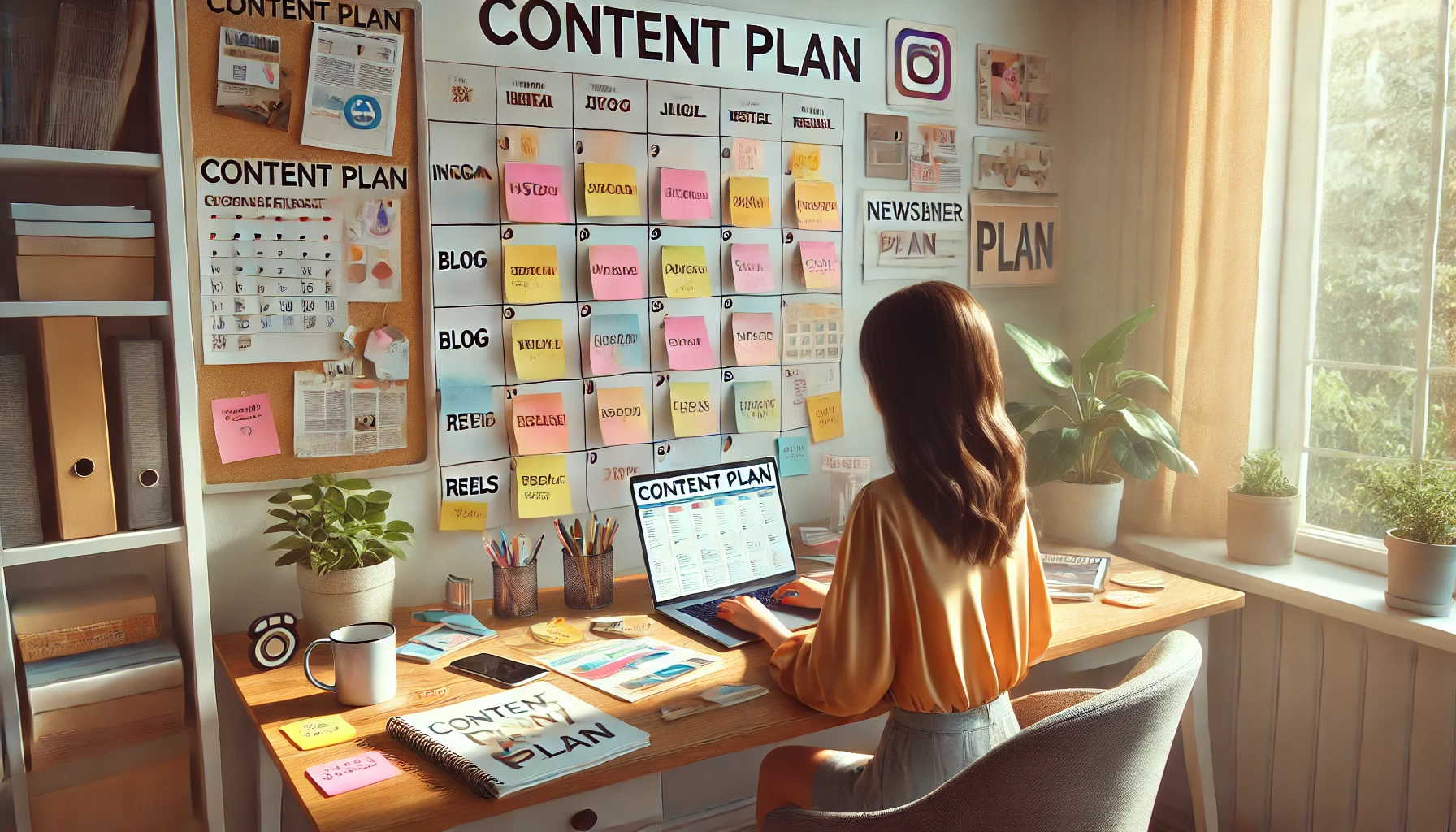If you’re running a small business, content is one of your most powerful tools. It helps you attract new clients, build trust, and grow your brand.
But let’s be honest — content can also feel chaotic.
You’ve got blog post drafts, Instagram ideas, YouTube scripts, newsletter topics, saved reels, screenshots, and sticky notes everywhere. And with so many platforms and formats, it’s easy to feel overwhelmed.
That’s where content organization comes in.
In this article, you’ll learn how to organize your content ideas, schedule, creation process, and library — so you can save time, reduce stress, and stay consistent without burning out.
Why Content Organization Matters
When your content is organized, you:
- Save hours of decision-making
- Create with more clarity and intention
- Stay consistent (even when you’re busy)
- Avoid repeating yourself or running out of ideas
- Make smarter use of your best-performing content
Organized content = clear strategy = steady growth.
Let’s break down how to get your content under control step by step.
1. Define Your Content Goals
Before you organize anything, get clear on your purpose.
Ask yourself:
- What do I want my content to achieve?
- Am I creating to attract leads? Educate? Build a community? Sell?
- What types of content support those goals?
For example:
If your goal is to get more clients, your content might focus on case studies, FAQs, testimonials, and how-to posts.
If your goal is to grow your audience, you might focus on viral-style reels, shareable quotes, or SEO blog posts.
Your goals shape your strategy — and your organization.
2. Choose Your Core Content Channels
Trying to be everywhere at once is exhausting and unsustainable.
Instead, pick 1–2 primary content platforms where you’ll focus your energy. These might be:
- YouTube
- Blog
- TikTok
- Email newsletter
- Podcast
Each platform has different content needs, so choosing your core channels helps you create with focus.
You can always repurpose across other platforms later — but start with a strong base.
3. Create a Content Pillar System
Content pillars are the 3–5 main topics your brand talks about.
They help you stay consistent and avoid “what should I post?” confusion.
Example for a fitness coach:
- Workouts
- Nutrition tips
- Motivation/mindset
- Client results
- Behind the scenes
Once you have your pillars, organize your content ideas under each one. This makes planning and writing so much easier.
4. Use a Central Content Bank
A content bank is a place where you store all your content ideas.
You can use:
- Google Sheets
- Notion
- Trello
- Airtable
- A simple notebook
Create columns or categories like:
- Idea
- Content pillar
- Platform
- Format (reel, blog, carousel, etc.)
- Status (idea, drafting, scheduled, published)
- Notes or inspiration
Now, whenever you think of an idea, just add it to the bank — no more lost notes or last-minute stress.
5. Build a Simple Content Calendar
A content calendar shows you what you’re posting, where, and when.
You can make one using:
- Google Calendar
- Notion calendar view
- Trello board with due dates
- Paper planner or whiteboard
Plan:
- The type of content you’ll share each week
- Posting frequency (e.g. 3x/week on Instagram, weekly email, etc.)
- Topics based on your content pillars
- Key promotions or seasonal events
Batch planning a week or month at a time saves mental energy and keeps your messaging consistent.
6. Create a Repeatable Weekly Workflow
Instead of creating content every single day, build a repeatable system for batching and scheduling.
Example weekly workflow:
Monday – Plan posts + write captions
Tuesday – Design graphics or film videos
Wednesday – Schedule content using Buffer, Later, or Meta
Thursday – Engage with audience + answer DMs
Friday – Review performance + prep ideas for next week
This system helps you stay on top of your content without scrambling last minute.
7. Repurpose Your Best Content
Not every piece of content needs to be created from scratch.
Look back at your best-performing content (high likes, saves, comments, replies, or clicks) and ask:
- Can I repost this with updated visuals or format?
- Can I turn this blog post into a carousel or reel?
- Can I turn a long caption into a short quote graphic?
Repurposing helps you work smarter, not harder — and reach more people with the same message.
8. Store Your Visual Assets in Folders
Create organized folders on your computer or cloud storage to keep everything accessible.
Suggested folder structure:
- Content Calendar
- Graphics (by type: carousels, reels, stories, etc.)
- Templates (for Canva, Instagram, etc.)
- Photos (brand photos, behind the scenes, etc.)
- Drafts (captions, scripts, outlines)
Use clear file names like IG_post_client_story_March2025.jpg so you can easily find things later.
9. Use Templates to Save Time
Templates reduce creative decision fatigue and help you create faster.
Create or download templates for:
- Instagram posts (quotes, tips, testimonials)
- Stories (polls, questions, behind the scenes)
- Newsletter formats
- YouTube thumbnails
- Blog post outlines
Once you build your own system, content creation becomes faster and more fun.
10. Review Performance Monthly
Once a month, take time to check what’s working — and what’s not.
Ask:
- Which posts had the most engagement or reach?
- Which emails got the most opens or clicks?
- What topics resonated most with my audience?
- What content didn’t perform as expected — and why?
This review helps you plan smarter for the next month — and keeps your strategy aligned with your audience’s needs.
Bonus: Stay Flexible
Content calendars and systems are great — but don’t be afraid to adjust.
If you feel inspired to post something spontaneous, do it.
If you need a break, take one and communicate with your audience.
If something’s not working, test something new.
Your content should work for you — not drain you.
